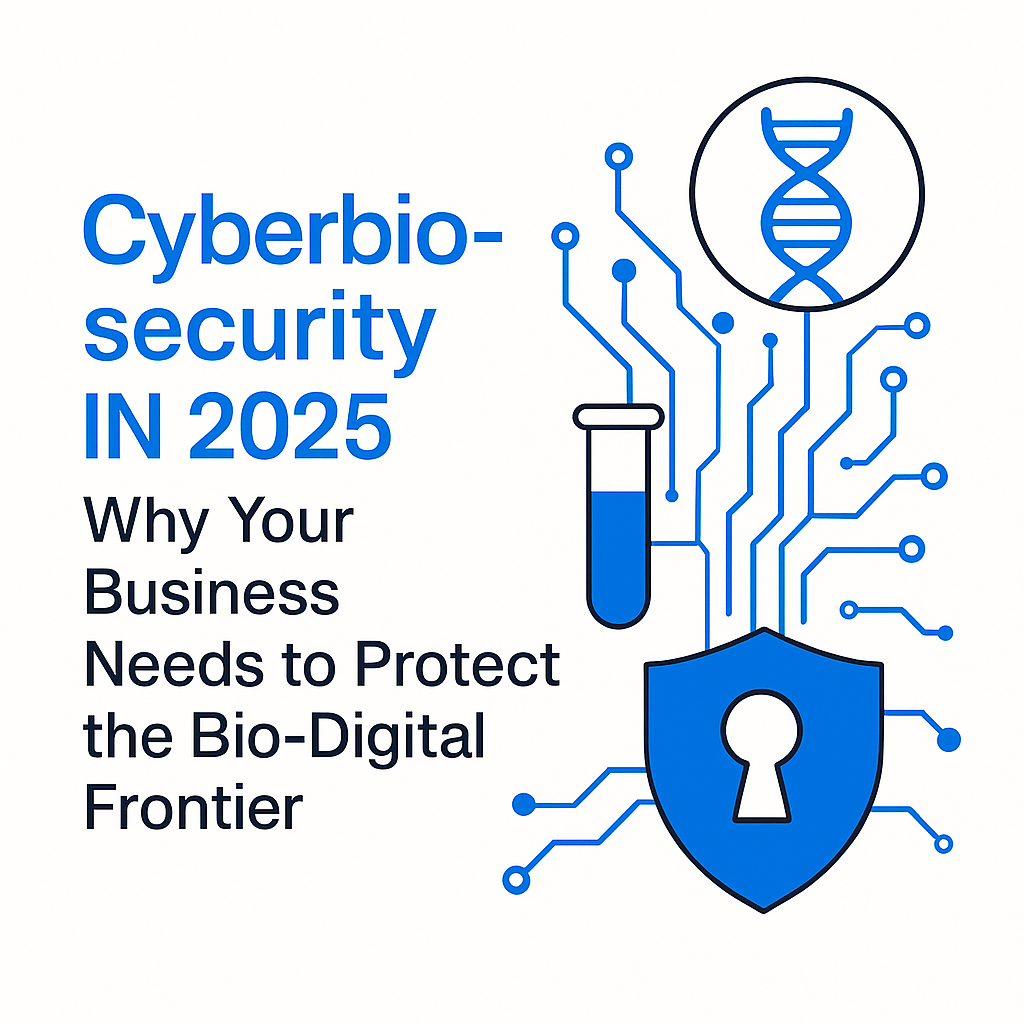The convergence of biological sciences and digital technologies—like synthetic biology, genomics, and automated lab systems—is revolutionizing industries from healthcare to agriculture. But it also creates a hidden layer of vulnerability known as cyberbiosecurity. This emerging field addresses the threats at the intersection of cybersecurity and biosecurity—threats capable of disrupting bio-research, supply chains, and even public health.
What Is Cyberbiosecurity?
Cyberbiosecurity protects against malicious activities that exploit biological processes through digital systems. As defined by researchers Murch et al., it concerns the “potential for destruction, misuse, or exploitation of valuable information and material at the interface of life sciences and digital systems” Wikipedia.
Why It Matters in 2025
- Automated biolabs and robotic systems can be remotely tampered with.
- Research databases, patient data, and prototypes can be stolen or manipulated.
- Biotech startups now rely on cloud data and outsourcing, widening the threat surface Council on Strategic RisksVirginia Tech Publications.
Cyberbiosecurity Threat Examples
- DNA Malware: Security researchers have shown how malicious code can be embedded in DNA strands that compromise sequencing systems Council on Strategic Risks.
- Lab Robot Sabotage: Remote manipulation of lab controls could expose staff to hazardous pathogens or corrupt critical experiments Council on Strategic Risks.
Why Businesses & Institutions Should Care
- Sensitive labs (R&D, vaccine production, food safety) are critical infrastructure.
- Breaches could result in intellectual property theft, product sabotage, or lost trust.
- Industries must now adopt multi-layered defense strategies, not just traditional IT security.
How to Address Cyberbiosecurity Threats
1. Risk Assessment & Red Teaming
Audit lab networks, robotic systems, and supply chains for vulnerabilities. Test them through realistic penetration tests.
2. Employee Training
Teach bioscience and IT teams to recognize cyberbio threats via hands-on workshops and simulations.
3. Cybersecurity Controls for Biotech Environments
Apply secure development for lab software, hardened endpoints, and robust network segmentation.
4. Post-Incident Planning
Have a response plan tailored to bio-IT compromise—ensuring swift containment and recovery.
Recon Cyber Security supports this critical integration through:
- Comprehensive VAPT and red teaming services tailored to biotech setups.
- Advanced training programs that bridge cybersecurity and biomedical understanding.
Final Take
Cyberbiosecurity is not a niche topic—it’s essential for protecting the future of biotech innovation and public health. By preparing today, we safeguard tomorrow’s bio-digital breakthroughs.
Would you like to talk to us about safeguarding your bio-digital assets with tailored training or expert services?
Contact Recon Cyber Security





